Industrial design

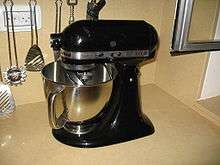
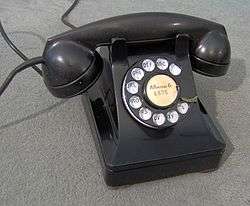
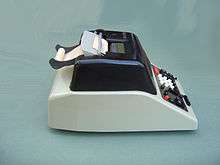
Industrial design is a process of design applied to products that are to be manufactured through techniques of mass production.[2][3] Its key characteristic is that design is separated from manufacture: the creative act of determining and defining a product's form and features takes place in advance of the physical act of making a product, which consists purely of repeated, often automated, replication.[4][5] This distinguishes industrial design from craft-based design, where the form of the product is determined by the product's creator at the time of its creation.[6]
All manufactured products are the result of a design process, but the nature of this process can take many forms: it can be conducted by an individual or a large team; it can emphasize intuitive creativity or calculated scientific decision-making, and often emphasizes both at the same time; and it can be influenced by factors as varied as materials, production processes, business strategy and prevailing social, commercial or aesthetic attitudes.[4] The role of an industrial designer is to create and execute design solutions for problems of form, function, usability, physical ergonomics, marketing, brand development, and sales.[7]
History
Precursors
For several millennia before the onset of industrialisation design, technical expertise and manufacture lay together in the hands of individual craftsmen, who determined the form of a product at the point of its creation according to their own manual skill, the parameters set by their clients, the experience accumulated through their own experimentation and traditional knowledge passed on to them through training or apprenticeship.[6]
The division of labour that underlies the practice of industrial design did have precedents in the pre-industrial era.[2] The growth of trade in the medieval period led to the emergence of large workshops in cities such as Florence, Venice, Nuremberg and Bruges, where groups of more specialist craftsmen made objects with common forms through the repetitive duplication of models defined by their shared training and technique.[8] Competitive pressures in the early 16th century led to the emergence in Italy and Germany of pattern books: collections of engravings illustrating decorative forms and motifs that could be applied to a wide range of products, and whose creation therefore took place in advance of their application.[8] The use of drawing to specify how something is later to be constructed was first developed by architects and shipwrights during the Italian Renaissance.[9]
In the 17th century the scale of the artistic patronage of centralised monarchical states such as France led to the growth of large government-operated manufacturing operations epitomised by the Gobelins Manufactory, opened in Paris in 1667 by Louis XIV.[8] Here teams of hundreds of craftsmen, including specialist artists, decorators and engravers, produced sumptuously decorated products ranging from tapestries and furniture to metalwork and coaches, all under the creative supervision of the King's leading artist Charles Le Brun.[10] This pattern of large-scale royal patronage was repeated in the court porcelain factories of the early 18th century, such as the Meissen porcelain workshops established in 1709 by the Grand Duke of Saxony, where patterns from a range of sources, including court goldsmiths, sculptors and engravers, were used as models for the vessels and figurines for which it became famous.[11] As long as reproduction remained craft-based, however, the form and artistic quality of the product remained in the hands of the individual craftsman, and tended to decline as the scale of production increased.[12]
Birth of industrial design
The emergence of industrial design is specifically linked to the growth of industrialisation and mechanisation that began with the industrial revolution in Great Britain in the mid 18th century.[2][3] The rise of industrial manufacture changed the way objects were made, urbanisation changed patterns of consumption, the growth of empires broadened tastes and diversified markets, and the emergence of a wider middle class created demand for fashionable styles from a much larger and more heterogeneous population.[13]
The first use of the term "industrial design" is often attributed to the industrial designer Joseph Claude Sinel in 1919 (although he himself denied this in interviews), but the discipline predates 1919 by at least a decade. Christopher Dresser is considered among the first independent industrial designers.[14] Industrial design's origins lie in the industrialization of consumer products. For instance the Deutscher Werkbund, founded in 1907 and a precursor to the Bauhaus, was a state-sponsored effort to integrate traditional crafts and industrial mass-production techniques, to put Germany on a competitive footing with England and the United States.
The earliest use of the term may have been in The Art Union, A monthly Journal of the Fine Arts, 1839.
Dyce’s report to the Board of Trade on foreign schools of Design for Manufactures. Mr Dyces official visit to France, Prussia and Bavaria for the purpose of examining the state of schools of design in those countries will be fresh in the recollection of our readers. His report on this subject was ordered to be printed some few months since, on the motion of Mr Hume.The school of St Peter, at Lyons was founded about 1750 for the instruction of draftsmen employed in preparing patterns for the silk manufacture. It has been much more successful than the Paris school and having been disorganized by the revolution, was restored by Napoleon and differently constituted, being then erected into an Academy of Fine Art: to which the study of design for silk manufacture was merely attached as a subordinate branch. It appears that all the students who entered the school commence as if they were intended for artists in the higher sense of the word and are not expected to decide as to whether they will devote themselves to the Fine Arts or to Industrial Design, until they have completed their exercises in drawing and painting of the figure from the antique and from the living model. It is for this reason, and from the fact that artists for industrial purposes are both well paid and highly considered (as being well instructed men) that so many individuals in France engage themselves in both pursuits.
The Practical Draughtsman's Book of Industrial Design by Jacques-Eugène Armengaud was printed in 1853.[15] The subtitle of the (translated) work explains, that it wants to offer a "complete course of mechanical, engineering, and architectural drawing." The study of those types of technical drawing, according to Armengaud, belong to the field of industrial design. This work paved the way for a big expansion in the field drawing education in France, the United Kingdom and the United States.
Robert Lepper helped to establish one of the country's first industrial design degree programs at Carnegie Institute of Technology.[16]
Education
Product design and industrial design overlap in the fields of user interface design, information design, and interaction design. Various schools of industrial design specialize in one of these aspects, ranging from pure art colleges and design schools (product styling), to mixed programs of engineering and design, to related disciplines such as exhibit design and interior design, to schools that almost completely subordinated aesthetic design to concerns of usage and ergonomics, the so-called functionalist school.[17] Except for certain functional areas of overlap between industrial design and engineering design, educational programs in the U.S. for engineering design require accreditation by the Accreditation Board for Engineering and Technology (ABET)[18] in contrast to programs for industrial design which are accredited by the National Association of Schools of Art and Design (NASAD).[19]
Institutions
Most industrial designers complete a design or related program at a vocational school or university. Relevant programs include graphic design, interior design, industrial design, architectural technology, and drafting Diplomas and degrees in industrial design are offered at vocational schools and universities worldwide. Diplomas and degrees take two to four years of study. The study results in a Bachelor of Industrial Design (B.I.D.), Bachelor of Science (B.Sc) or Bachelor of Fine Arts (B.F.A.). Afterwards, the bachelor programme can be extended to postgraduate degrees such as Master of Design, Master of Fine Arts and others to a Master of Arts or Master of Science.
Definition of industrial design
Industrial design studies function and form—and the connection between product, user, and environment. Generally, industrial design professionals work in small scale design, rather than overall design of complex systems such as buildings or ships. Industrial designers don't usually design motors, electrical circuits, or gearing that make machines move, but they may affect technical aspects through usability design and form relationships. Usually, they work with other professionals such as engineers who design the mechanical aspects of the product assuring functionality and manufacturability, and with marketers to identify and fulfill customer needs and expectations.
Industrial design (ID) is the professional service of creating and developing concepts and specifications that optimize the function, value and appearance of products and systems for the mutual benefit of both user and manufacturer.
Design, itself, is often difficult to describe to non-designers and engineers, because the meaning accepted by the design community is not made of words. Instead, the definition is created as a result of acquiring a critical framework for the analysis and creation of artifacts. One of the many accepted (but intentionally unspecific) definitions of design originates from Carnegie Mellon's School of Design, "Design is the process of taking something from its existing state and moving it to a preferred state." This applies to new artifacts, whose existing state is undefined, and previously created artifacts, whose state stands to be improved.
Industrial design can overlap significantly with engineering design, and in different countries the boundaries of the two concepts can vary, but in general engineering focuses principally on functionality or Utility of Products whereas industrial design focuses principally on aesthetic and user-interface aspects of products. In many jurisdictions this distinction is effectively defined by credentials and/or licensure required to engage in the practice of engineering.[21] "Industrial design" as such does not overlap much with the engineering sub-discipline of industrial engineering, except for the latter's sub-specialty of ergonomics.
At the 29th General Assembly in Gwangju, South Korea,2015, the Professional Practise Committee unveiled a renewed definition of industrial design as follows: "Industrial Design is a strategic problem-solving process that drives innovation, builds business success and leads to a better quality of life through innovative products, systems, services and experiences." An extended version of this definition is as follows: "Industrial Design is a strategic problem-solving process that drives innovation, builds business success and leads to a better quality of life through innovative products, systems, services and experiences. Industrial Design bridges the gap between what is and what’s possible. It is a trans-disciplinary profession that harnesses creativity to resolve problems and co-create solutions with the intent of making a product, system, service, experience or a business, better. At its heart, Industrial Design provides a more optimistic way of looking at the future by reframing problems as opportunities. It links innovation, technology, research, business and customers to provide new value and competitive advantage across economic, social and environmental spheres. Industrial Designers place the human in the centre of the process. They acquire a deep understanding of user needs through empathy and apply a pragmatic, user centric problem solving process to design products, systems, services and experiences. They are strategic stakeholders in the innovation process and are uniquely positioned to bridge varied professional disciplines and business interests. They value the economic, social and environmental impact of their work and their contribution towards co-creating a better quality of life. "[22]
Design process
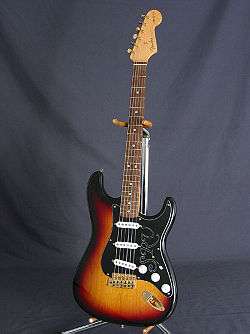

Although the process of design may be considered 'creative,' many analytical processes also take place. In fact, many industrial designers often use various design methodologies in their creative process. Some of the processes that are commonly used are user research, sketching, comparative product research, model making, prototyping and testing. These processes are best defined by the industrial designers and/or other team members. Industrial designers often utilize 3D software, computer-aided industrial design and CAD programs to move from concept to production. They may also build a prototype first and then use industrial CT scanning to test for interior defects and generate a CAD model. From this the manufacturing process may be modified to improve the product.
Product characteristics specified by industrial designers may include the overall form of the object, the location of details with respect to one another, colors, texture, form, and aspects concerning the use of the product. Additionally they may specify aspects concerning the production process, choice of materials and the way the product is presented to the consumer at the point of sale. The inclusion of industrial designers in a product development process may lead to added value by improving usability, lowering production costs and developing more appealing products.
Industrial design may also focus on technical concepts, products, and processes. In addition to aesthetics, usability, and ergonomics, it can also encompass engineering, usefulness, market placement, and other concerns—such as psychology, desire, and the emotional attachment of the user. These values and accompanying aspects that form the basis of industrial design can vary—between different schools of thought, and among practicing designers.
Industrial design rights
Industrial design rights are intellectual property rights that make exclusive the visual design of objects that are not purely utilitarian. A design patent would also be considered under this category. An industrial design consists of the creation of a shape, configuration or composition of pattern or color, or combination of pattern and color in three-dimensional form containing aesthetic value. An industrial design can be a two- or three-dimensional pattern used to produce a product, industrial commodity or handicraft. Under the Hague Agreement Concerning the International Deposit of Industrial Designs, a WIPO-administered treaty, a procedure for an international registration exists. An applicant can file for a single international deposit with WIPO or with the national office in a country party to the treaty. The design will then be protected in as many member countries of the treaty as desired.
Examples of iconic industrial design

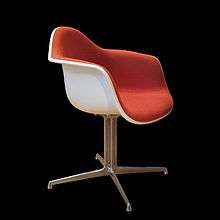
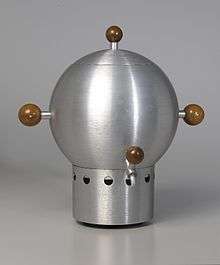
A number of industrial designers have made such a significant impact on culture and daily life that their work is documented by historians of social science. Alvar Aalto, renowned as an architect, also designed a significant number of household items, such as chairs, stools, lamps, a tea-cart, and vases. Raymond Loewy was a prolific American designer who is responsible for the Royal Dutch Shell corporate logo, the original BP logo (in use until 2000), the PRR S1 steam locomotive, the Studebaker Starlight (including the later iconic bulletnose), as well as Schick electric razors, Electrolux refrigerators, short-wave radios, Le Creuset French ovens, and a complete line of modern furniture, among many other items.
Richard A. Teague, who spent most of his career with the American Motor Company, originated the concept of using interchangeable body panels so as to create a wide array of different vehicles using the same stampings. He was responsible for such unique automotive designs as the Pacer, Gremlin, Matador coupe, Jeep Cherokee, and the complete interior of the Eagle Premier.
Viktor Schreckengost designed bicycles manufactured by Murray bicycles for Murray and Sears, Roebuck and Company. With engineer Ray Spiller, he designed the first truck with a cab-over-engine configuration, a design in use to this day. Schreckengost also founded The Cleveland Institute of Art's school of industrial design.
Oskar Barnack was a German optical engineer, precision mechanic, industrial designer, and the father of 35mm photography. He developed the Leica, which became the hallmark for photography for 50 years, and remains a high-water mark for mechanical and optical design.
Charles and Ray Eames were most famous for their pioneering furniture designs, such as the Eames Lounge Chair Wood and Eames Lounge Chair. Other influential designers included Henry Dreyfuss, Eliot Noyes, John Vassos, and Russel Wright.
Dieter Rams is a German industrial designer closely associated with the consumer products company Braun and the Functionalist school of industrial design.
Many of Apple's recent iconic products were designed by Sir Jonathan Ive.
See also
- Automotive design
- Chief Experience Officer (CXO)
- Communication design
- Core77
- Creative engineering
- Designer
- Emotional Design by Donald Norman
- Engineering design process
- Environmental design
- Experience design
- Form follows function
- Hague system
- Hardware Interface Design
- Industrial Designers Society of America
- Interaction design
- Product design
- Product development
- Rapid prototyping
- Sensory design
- Sustainable design
- Transgenerational design
- TU Delft Faculty of Industrial Design Engineering
- Virtual Product Development
- WikID
Notes
References
Citations
- ↑ "WE 300-series Types". Paul-f.com. 2012-08-11. Retrieved 2012-09-20.
- 1 2 3 Heskett 1980, pp. 10-11.
- 1 2 Kirkham 1999.
- 1 2 Heskett 1980, p. 10.
- ↑ Noblet 1993, pp. 21-22.
- 1 2 Noblet 1993, p. 21.
- ↑ de Noblet, J., Industrial Design, Paris: A.F.A.A. (1993)
- 1 2 3 Heskett 1980, p. 11.
- ↑ Baynes 1991, p. 108.
- ↑ Heskett 1980, pp. 11-12.
- ↑ Heskett 1980, p. 12.
- ↑ Heskett 1980, pp. 12-13.
- ↑ Benton 2000, p. 380.
- ↑ "Christopher Dresser". Design Museum. Retrieved 9 April 2015.
- ↑ "The practical draughtsman's book of industrial design : forming a complete course of mechanical, engineering, and architectural drawing by Armengaud, aîné (Jacques-Eugène), 1810-1891". Internet Archive. Retrieved 14 April 2015.
- ↑ "Newsbriefs: Lepper show runs at Warhol." Carnegie Mellon Magazine. Winter 2002. Retrieved January 17, 2014.
- ↑ Pulos, Arthur J., The American Design Adventure 1940-1975, Cambridge, Mass:MIT Press (1988), p. 249 (ISBN 9780262161060)
- ↑ Abet.org
- ↑ Nasad.arts-accredit.org
- ↑ Archived January 24, 2010, at the Wayback Machine.
- ↑ "The Difference Between Industrial Design And Design Engineering". MCADC Cafe. Retrieved 9 April 2015.
- ↑ ICSID web:DEFINITION OF INDUSTRIAL DESIGN
- ↑ Dyson, James (1997). Against the odds: An autobiography. London: Orion Business. ISBN 978-0-7528-0981-6. OCLC 38066046.
Sources
- Barnwell, Maurice. Design, Creativity and Culture, Black Dog, 2011, ISBN 978 1 907317 408
- Barnwell, Maurice. Design Evolution: Big Bang to Big Data,Toronto, 2014. ISBN 978-0-9937396-0-6
- Benton, Charlotte (2000). "Design and Industry". In Kemp, Martin. The Oxford History of Western Art. Oxford: Oxford University Press. pp. 380–383. ISBN 0198600127.
- Coelho, Denis A. (editor), Industrial Design - New Frontiers, InTech Open Access Publisher, 2011. ISBN 978-953-307-622-5.
- Forty, Adrian. Objects of Desire: Design and Society Since 1750. Thames Hudson, May 1992. ISBN 978-0-500-27412-5
- Heskett, John. Industrial Design, Thames & Hudson, 1980, ISBN 0500201811
- Kirkham, Pat (1999). "Industrial design". Grove Art Online. Oxford University Press.
- Mayall, WH, Industrial Design for Engineers, London: Iliffe Books, 1967, ISBN 978-0592042053
- Mayall, WH, Machines and Perception in Industrial Design, London: Studio Vista, 1968, ISBN 978-0289279168
- Meikle, Jeffrey. Twentieth Century Limited: Industrial Design engineering in America, 1925 - 1939, Philadelphia: Temple University Press, 1979 ISBN 978-0877222460
- Noblet, Jocelyn de (1993). "Design in Progress". In Noblet, Jocelyn de. Industrial design: reflection of a century. Paris: Flammarion/APCI. pp. 21–25. ISBN 2080135392.
- Pirovano, Carlo, ed. (1991). "Forms of Representation". History of Industrial Design. 1. Milan: Electa. pp. 108–127. OCLC 32885051.
External links
| Wikimedia Commons has media related to Product Design. |
| Wikiquote has quotations related to: Industrial design |
- Doodles, Drafts and Designs: Industrial Drawings from the Smithsonian (2004) Smithsonian Institution Libraries